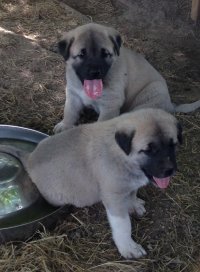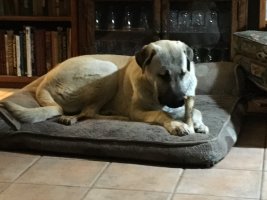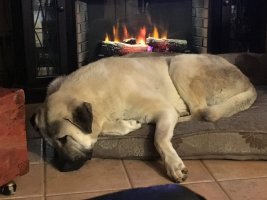- Thread starter
- #21
Ridgetop
Herd Master
Big tall man, loud, wearing a black cowboy hat, grabbed me in a hug. Sentry did all but attack him.
Sentry growled, barked and backed away. Buford looked at his hero and mentor. Sentry said this is a Bad Man. Buford went aggressive and bared his teeth at my son. So there he was, two Anatolians that had gone past unfriendly.
Erick was very precise on how we were to introduce new people to our Anatolians. Let the dogs see us being very calm and friendly with them first. Then bring them in to see the dogs. Important to let dogs determine that we are happy to see the newcomers. He emphasized that if we were not home these people would be welcome on the property. As all dog owners know, dogs behave differently when their owners are present.
Big difference in introductions mean difference in dogs' attitudes. Anatolians don't forget and even if properly introduced can later decide there is a threat. Erick had a fellow working for him that he had introduced the dogs to. The dogs allowed him on the property while he was working. A week later the man wanted an advance on his pay. He was a big guy, he picked up a hammer and became belligerent. Suddenly two Anatolians that had been sleeping on the other side of the area materialized at Erick's side. Low soft growls convinced the man to obey Erick's instructions to leave the property. A couple days later he came to apologize and ask for the job back. The Anatolians would not let him near and snarled constantly until he left. They had not forgotten the threat he had posed to Erick.I properly introduced the dogs to Chris, my friend. First, through the fence, Chris put the back of his hand up to, not through, the fence. Sentry and Sheba carefully sniffed his hand. Then Chris went in the pen with me while I fed them. They sniffed him, ate, but kept a watchful eye on him. Then he petted both of them, talking to them and setting them at ease.
Even when properly introduced Anatolians can often sense when someone is not friendly or could be a threat. In Layne's case, the fact that he showed up and grabbed Sentry's goddess was enough to make him an enemy.




